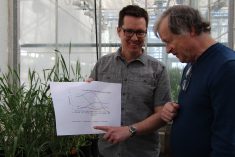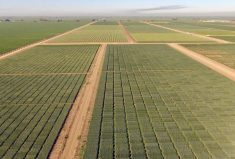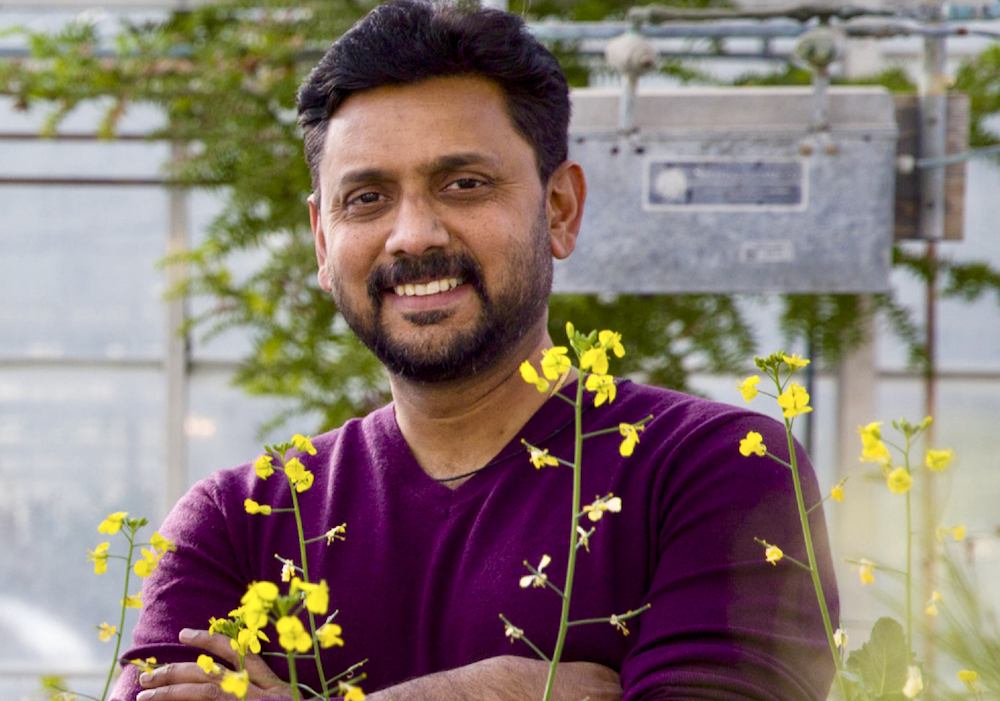Combining ‘speed breeding’ with new genomic tools will be able to deliver big dividends for farmers in the coming years, says a plant breeder using the accelerated breeding technique.
“It really highlights that we can bring these technologies together to improve genetic gain in the crops of the future,” said Lee Hickey, an associate professor and crop geneticist at the University of Queensland in Australia.
“Integration with genomic selection requires bigger databases and major operational changes but it can lead to bigger gains.”
Crop breeders can use speed breeding to produce six generations of wheat (or four of canola) in the time it takes to breed one generation using traditional field breeding, said Hickey, adding the basic process is well established.
Over the past 10 years his research team and partners have developed protocols for using the technology on a wide range of crops including wheat, barley, canola, oats and peas. In a nutshell, speed breeding involves exposing plants to enforced lighting (mainly by LEDs) and temperature control 22 hours per day, giving the plants just two hours to rest.
At the University of Queensland, the process is conducted in a specially modified greenhouse. Control over lighting and heat differentiates speed breeding from standard greenhouse breeding, which relies on highly variable natural light, said Hickey during a presentation at the recent virtual Canola Week.

“I think there’s plenty of room for optimization to improve efficiencies in this protocol and build on this for canola breeding and pre-breeding programs,” he added.
The concept dates back to the 1980s when NASA funded research on breeding wheat on the International Space Station. Utah State University picked up the ball by doing fundamentally the same thing on Earth.
“The research done by Utah State University exposed the plants to continuous light which triggers the wheat plants into flowering earlier so you can grow a vast crop of wheat,” said Hickey.
It allows six generations of wheat to be bred in a single year as opposed to two generations per year using high-volume “shuttle” breeding (growing one generation in the Northern Hemisphere and the next in the Southern Hemisphere) or a single generation using traditional breeding. It typically takes six to eight generations after crossing to develop a cultivar.
Read Also

Hail research hopes to benefit potato growers
Alberta research scientist measures hail storm and heat dome affects on potato crops
Hickey compared the results of the 22-hour lighting protocol versus 16 hours (a standard photoperiod many researchers use for pushing generations) on canola. The number of days until first flower opening, days until drying and days until harvest were all lower when 22 hours of daily lighting were used compared to 16 hours.
Flowering duration was much lower at just over 20 days with the 22-hour protocol compared to just over 60 days with 16 hours.
“The plants flower earlier and you can essentially harvest these materials sooner,” he said.
The 22-hour canola was shorter by about half a metre compared to its 16-hour counterparts, but Hickey considers this to be a feature rather than a flaw.
“Generating smaller plants is really important for packing more plants into a smaller space,” he said.
His university partnered with the International Maize and Wheat Improvement Center (CIMMYT) to simulate how integrating speed breeding tools — in this case a fast-tracked genomic selection tool — can impact genetic gain in wheat over 30 years. The result was a 34 per cent genetic gain over conventional breeding, the equivalent of over 1,000 extra loaves of bread per hectare.
“It really highlights that we can bring these technologies together to improve genetic gain in the crops of the future,” said Hickey. “Integration with genomic selection requires bigger databases and major operational changes but it can lead to bigger gains.”
The basic principles are the same for virtually any crop (protocols have been developed for sorghum, millet, pigeon feed and even banana and eucalyptus) and can be done in a space as small as a shipping container for a reasonable price, he said. However, some elements are needed regardless of scale.
“Getting a lighting system and high-quality LEDs are important,” he said. “You need to be aware of the cooling capacity and the biological constraints that you’re facing. Automate everything wherever possible; automating irrigation and nutrient delivery can really reduce the cost.”
That’s good news for small research programs.
“We were thinking out of the box a little bit on how we can deliver these sort of systems and technology to breeding programs that have less resources,” said Hickey. “We came on this idea of speed breeding capsules. They’re glorified shipping containers with solar panels essentially.”
The Queensland team is sharing its research and has produced something of a “how-to” guide, he added.
“In recent years we’ve received a lot of requests for the protocols,” said Hickey. “(There’s an) urgency to speed up all of our crop improvement. Our programs around the world have certainly elevated in recent years around climate change. Also, people just want to be more efficient.”
Speed breeding can bolster both transgenic (GMO) and gene editing pipelines, he said.
“I think there’s a real opportunity around integrating these tools and technologies for better and more efficient outcomes. At the end of the day this is about validating new traits faster, it’s about delivering these new traits into farmers’ fields faster.”
















